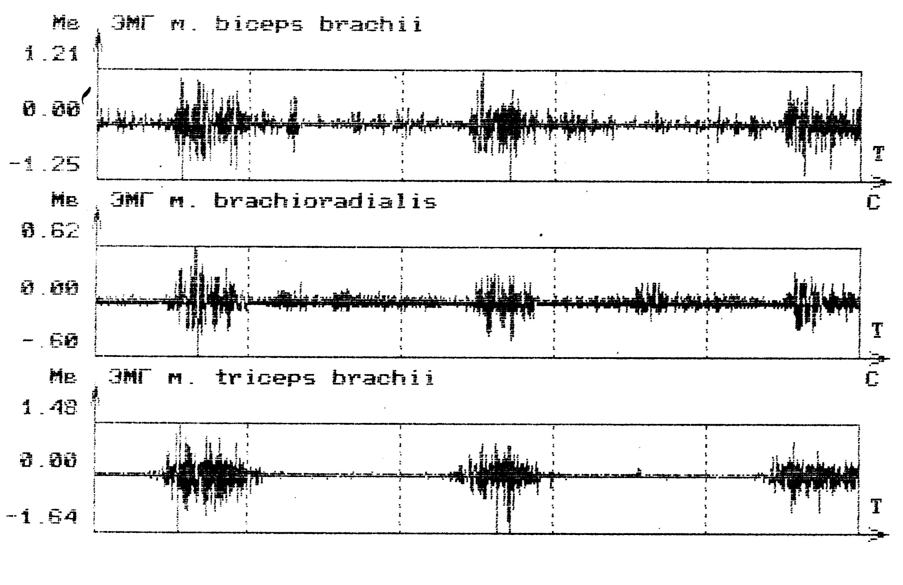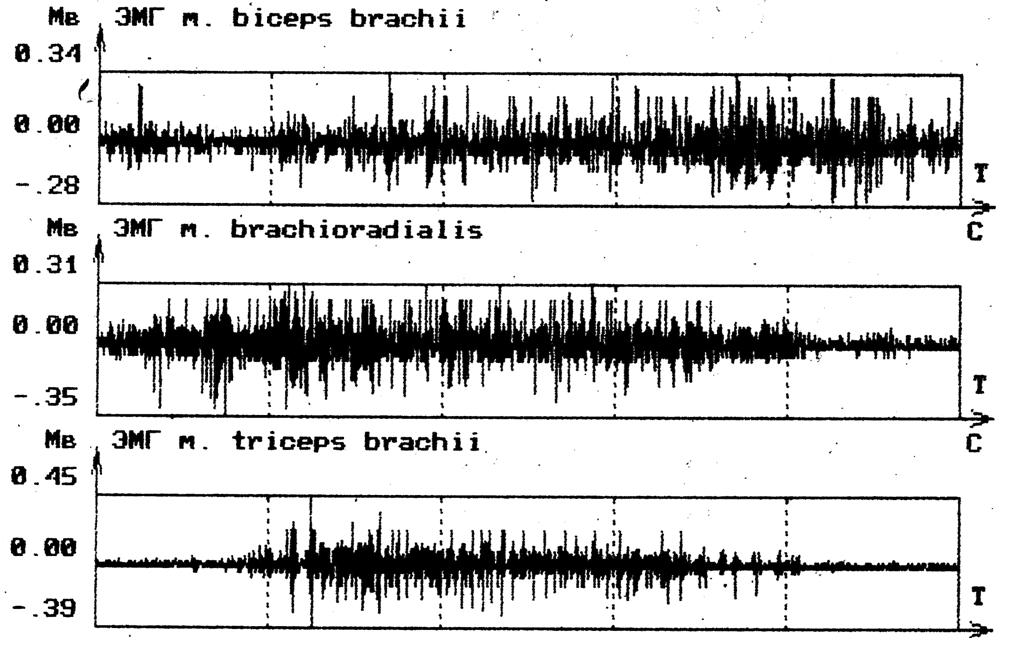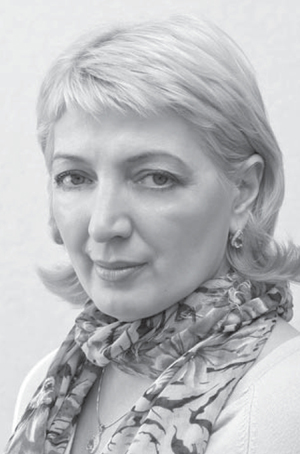MASTERING OF ACCURACY OF MOTOR ACTIONS BASED ON DEVELOPMENT OF MUSCULAR COORDINATION IN VOLLEYBALL
Фотографии:
ˑ:
I.A. Zyubanova, postgraduate. Tomsk state pedagogical university, Tomsk
V.A. Uskov, professor, Dr.Hab. Moscow city pedagogical university, Moscow
L.V. Kapilevich, professor, M.D. National research Tomsk polytechnic university, Tomsk
Key words: muscles, coordination, motor actions, accuracy, final effort fixing.
Introduction. Accuracy of any motor action depends on sensitivity of the ones involved in the sensor system control and ability for conscious perception of personal sensations. The ability to perceive and distinguish motor changes (up to slightest ones) according to spatial-temporal characteristics can be easily trained. But the values of muscular tension are much harder to perceive [1,7].
Muscle motor sensations and perceptions are rather specific in every kind of physical exercises and sport. Specialized perceptions named “distance sense” - among fencers and boxers; “time sense” - among runners, swimmers, speed skaters; “ball sense” - in volleyball, basketball players etc. are trained in the course of training. Therefore, spatial, temporal and strength motor accuracy is associated with specifics of specialized perceptions and their improvement [3,6].
Ability for accurate motor performance is developed, first of all, using conditioning exercises at regular increase of their coordination complicacy. It is shown in the tasks for accurate reproduction of simultaneous or serial movements and arm, leg and body positions while doing conditioning exercises free-handed, walking or at time trial; exercises for accurate estimation of spatial characteristics of distance of standing jump or run-up, throw distance etc. [2,5].
Higher coordination level is obtained by means of special motor proportionality exercises within the framework of time, space and muscle efforts. The methods applied are as follows: method of repeated exercise execution with further estimation of accuracy in time, space and muscle effort, so that the trainees remembered the characteristics and then estimated themselves the measures of time, space and muscle effort and reproduced it by request; methods of “contrast tasks” and of “bonding tasks” [4].
All the stipulated methods are based on the comparison by the ones who train of the objective urgent information on the characteristics of movements performed, obtained by technical means, with their personal motor sensations and corresponding adjustments. The awareness of the distinctions of subjective sensations and objective evidence at repeated exercises improves sensor sensitivity, providing for more accurate motor control [3,6].
The purpose of the study was to define the role of muscle coordination in performing accurate motor actions based on volleyball smash.
Materials and methods. The studies were carried out in terms of smash performance: a subject with sensors fixed on him performed a smash from zone 4 passing the ball from zone 3. At smash the stopwatch turned on by the signal from the ring detectors fixed on the subject’s fingers and turned off by the release signal from these detectors after long-term fixing of hand in the form of “ball spherical surface” along with recording of the time of the subject’s final effort after the smash. The perception of the duration of time intervals and delicacy of sensual muscle distinction of the conscious time of fixing of final efforts after a smash were determined by the disparity in the allowed (set) and actual time of hand‘s fixing.
All the 22 first-class volleyball players under examination were divided into two groups: experimental (11 persons) and control (11 persons) and performed the same volume of training exercises during the educational experiment, except for the first group doing them with fixing of final efforts of arm muscle contraction, and the second one - without fixing of final efforts. The subjects of the experimental group were to fix final efforts of the arm muscles contraction for 1, 2, 3 and 4 seconds within the 1st, 2nd, 3rd and 4th simulator training microcycles respectively.
At the same time muscle electromyogram was recorded while performing the technique stipulating for triple conscious fixing of final efforts.
The second part of the work on the estimation of the effect of the method of fixing of final hand’s effort on the accuracy of smash performance was presented by the comparative educational experiment with the subjects from the control and experimental groups. Smash accuracy was tested before the experiment and after 3 months of trainings.
Results and discussion. The results of the experiment are adduced in Table 1. The fault in muscle contraction perception by the time of fixing of final effort at standing smash performance totaled to 77,2% in the experimental group after the 1st training microcycle and the likelihood of accurate smash performance amounted to 1,32 points. The fault in perception of hand’s fixing time after a smash amounted to 44 % after 2, 18% - after 3 and 7 % after 4 training microcycles with the likelihood of accurate smash performance equal to 2,57, 3,11 and 4,18 points after 2, 3 and 4 microcycles.
Table 1. Indicators of smash performance
|
Microcycles |
test№ |
Time of hand finxing, s |
Indicators of smash performance characteristics |
||||
|
Experimental group |
faults in time perception, ms |
Control group |
Experimental group |
Control group |
|||
|
x±d |
|
x±d |
p |
p |
|||
|
– |
1 |
0 |
127,2±38,7 |
|
132,6±39,5 |
0,425 |
0,433 |
|
1 |
2 |
1 |
227,8±68,3 |
772,2 |
– |
0,471 |
– |
|
2 |
3 |
1 |
564,7±147,7 |
435,3 |
– |
0,541 |
– |
|
3 |
4 |
2 |
1643,6±319,1 |
356,4 |
– |
0,574 |
– |
|
4 |
5 |
3 |
2801,7±242,3 |
198,3 |
– |
0,636 |
– |
|
5 |
6 |
4 |
3514,3±326,6 |
485,7 |
151,8±40 |
0,582 |
0,537 |
As follows from the analyzed results stipulated in Table 1, the fault in perception of the time of fixing of final efforts after a play action comprised 198,3 ms (norm - 3000 ms) after the 4th training microcycle and the accuracy of smash performance – 4,18 points. The fault in perception of the time of fixing of final efforts after making a play action was 485,7 ms after the 5th training microcycle (norm - 4 seconds) and the likelihood of accurate smash performance comprised 3.23 points. Consequently, the increase of the time of fixing of final efforts after a smash by over 3 seconds affects negatively accuracy of smash performance.
Therefore, 2,8 seconds is the optimum time of mental and practical fixing of final effort to form the skill for accurate smash performance among volleyball players.
The analysis of the players’ arm and leg muscle electromyogram at triple performance of conscious fixing of final efforts at play action, revealed three serial peaks of bioelectrical activity (Fig. 1). In case of accurate performance of play action bioelectrical impulse peaks arise in arm and leg muscles almost simultaneously. The arm and leg muscle work miscoordination time does not exceed 0,08 seconds. The number of impulse peaks grows from 3 to 7 in case of inaccurate performance of relatively accurate movement, as proved by the delay of arising bioelectrical impulse peaks in athlete’s arm and leg muscles.

Fig. 1. Indices of muscle electromyogram while performing the technique stipulating for triple conscious fixing of final effort
Thus, whilst making a play action impulse “peaks” are formed three times in each of the muscles in compliance with its conscious triple program of “fixing of final efforts”, indicating to the athlete’s ability for repeated fixing of final efforts while executing one motor action, preconditioning the psychoemotional control of skill development.
The analysis of athlete’s muscle electromyogram concentrated on long-term “fixing of final efforts” (Fig.2) shows the long-term continuous work of all muscles after a play action. It affects accelerated skill development by longer conservation of the dominant excitation focus in cerebral cortex. The time indices of continuous muscle impulse, for example, biceps, amount to 4,67 s, which is 9,3 times more than 1 peak of bioelectrical activity of the same muscle.

Fig.2 Electromyogram indices while performing the technique concentrated on long-term fixing of hand‘s final effort
Motor skill may be assumed to be formed while performing a smash based on continuous imposition of direct and opposite bioflow excitation impulse from central nervous system to periphery to muscles and back.
A comparative educational experiment was made with the subjects of the control and experimental groups to estimate efficiency of the method of fixing of final hand’s effort on the accuracy of smash performance. After three months of trainings the subjects of both of the groups had their smash characteristics tested (Tab. 2). According to the comparative educational experiment, the gain of accuracy of smash performance in the experimental and control groups was 45,7 % (р<0.05) and 11,2% ( р>0.05) respectively. The time of smash performance decreased by 4,7% (р<0.05) and by 1,4 % ( р>0.05) in the quoted groups correspondingly.
Table 2. Indicators of smash performance characteristics among the subjects of comparative educational experiment
|
Groups |
Measures№ |
Accuracy of performance (р) |
Time (ms) |
|
Experimental |
1 2 3 4 |
0,223 0,234 0,246 0,325 |
2389,1 2353,3 2324,1 2275,9 |
|
Increment % |
|
+45,7 |
-4,7 |
|
Control |
1 4 |
0,215 0,239 |
2361,2 2395,2 |
|
Increment % |
|
+11,2 |
+1,4 |
As follows from the research results, the increase of smash accuracy in the experimental group is 34,5 % higher than in the control one, testifying to effectiveness of the method of final effort fixing for improvement of smash accuracy in volleyball.
Thus, conscious repeated fixing of final efforts after performing a technique is an acute factor of formation of the skill for accurate action execution and accelerated learning of play actions.
Conclusions.
1. The time of fixing of final effort after a smash of 2,8 seconds is optimal to form a motor skill. The increase of the time of final effort fixing after a smash by more than 3 seconds renders a negative influence on smash accuracy of volleyball players.
2. In case of accurate execution of playing action the bioelectrical impulse peaks arise in arm and leg muscles almost simultaneously. The arm and leg muscle miscoordination time does not exceed 0,08 second. The number of impulse peaks grows from 3 to 7 in case of inaccurate execution of a relatively accurate action, as proved by the delay of arising bioelectric impulse peaks in athlete's arm and leg muscles.
3. The studies proved effectiveness of the method of control of the time of fixing of final effort after a smash for training of its accurate execution in volleyball.
References
1. Bernstein, N.A. Selected works on biomechanics and cybernetics / N.A. Bernstein. – Moscow: SportAkademPress, 2001. – 296 P. (In Russian)
2. Bocharov, M.I. Particular biomechanics with motor physiology / M.I. Bocharov. – Ukhta: USTU, 2010. – 235 P. (In Russian)
3. Voronov, A.V. Evaluation method of accurate and inaccurate actions in team sports (case study of penalty throw in basketball) / A.V. Voronov, V.A. Uskov // Modeling of human sports activity in an artificially created environment (stands, training simulators, imitators): Proceedings of theor.-pract. conf. – Moscow: Fizkultura, obrazovanie i nauka, 1999. – P. 7–9. (In Russian)
4. Kazennikov, O.V. On the role of primary motor cortex in processing of motor activity at load catching / O.V. Kazennikov, M.I. Lipshitz // Fiziologiya cheloveka. – 2011. – V. 37. – № 5. – P. 108–112. (In Russian)
5. Improvement of the technique of direct spike performance in volleyball by means of computer stabilography / L.V. Kapilevich, E.V. Koshel'skaya, V.I. Andreev, I.A. Zyubanova // Teoriya i praktika fizicheskoy kultury. – 2011. – № 9. – P. 66–69. (In Russian)
6. Uskov, V.A. Teaching technology of programmed tactical and technical training of team athletes: abstract of doctoral thesis (Hab.) / V.A. Uskov. – Moscow: RSUPCST, 2004. – 56 P. (In Russian)
7. Physiological and biomechanical characteristics of technique of kick actions in football /E.V. Koshelskaya et al // Bulleten' eksperimental'noy biologii i meditsiny. – 2012. – V. 153. – № 2. – P. 235–237. (In Russian)
Author’s contacts: kapil@yandex.ru



 Журнал "THEORY AND PRACTICE
Журнал "THEORY AND PRACTICE